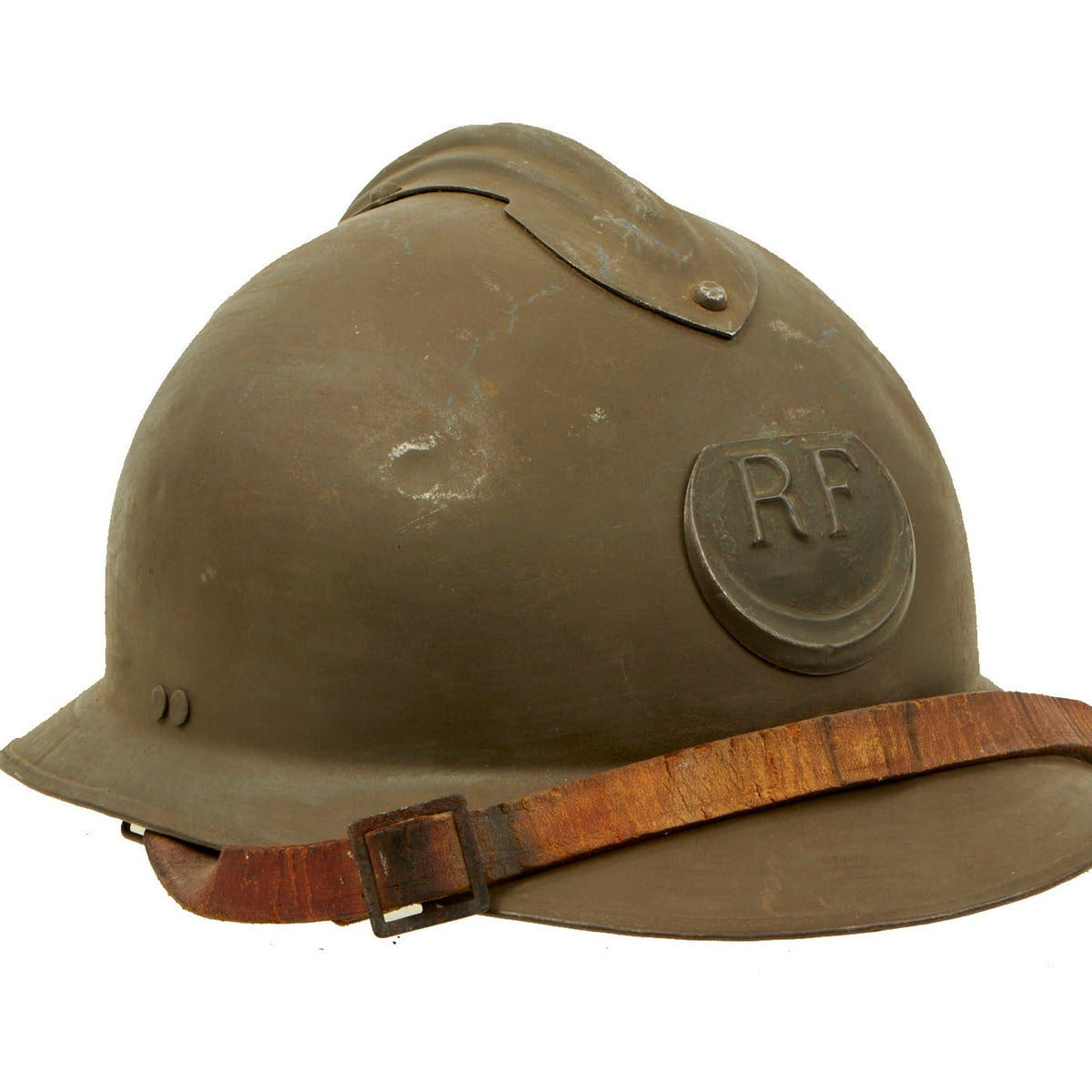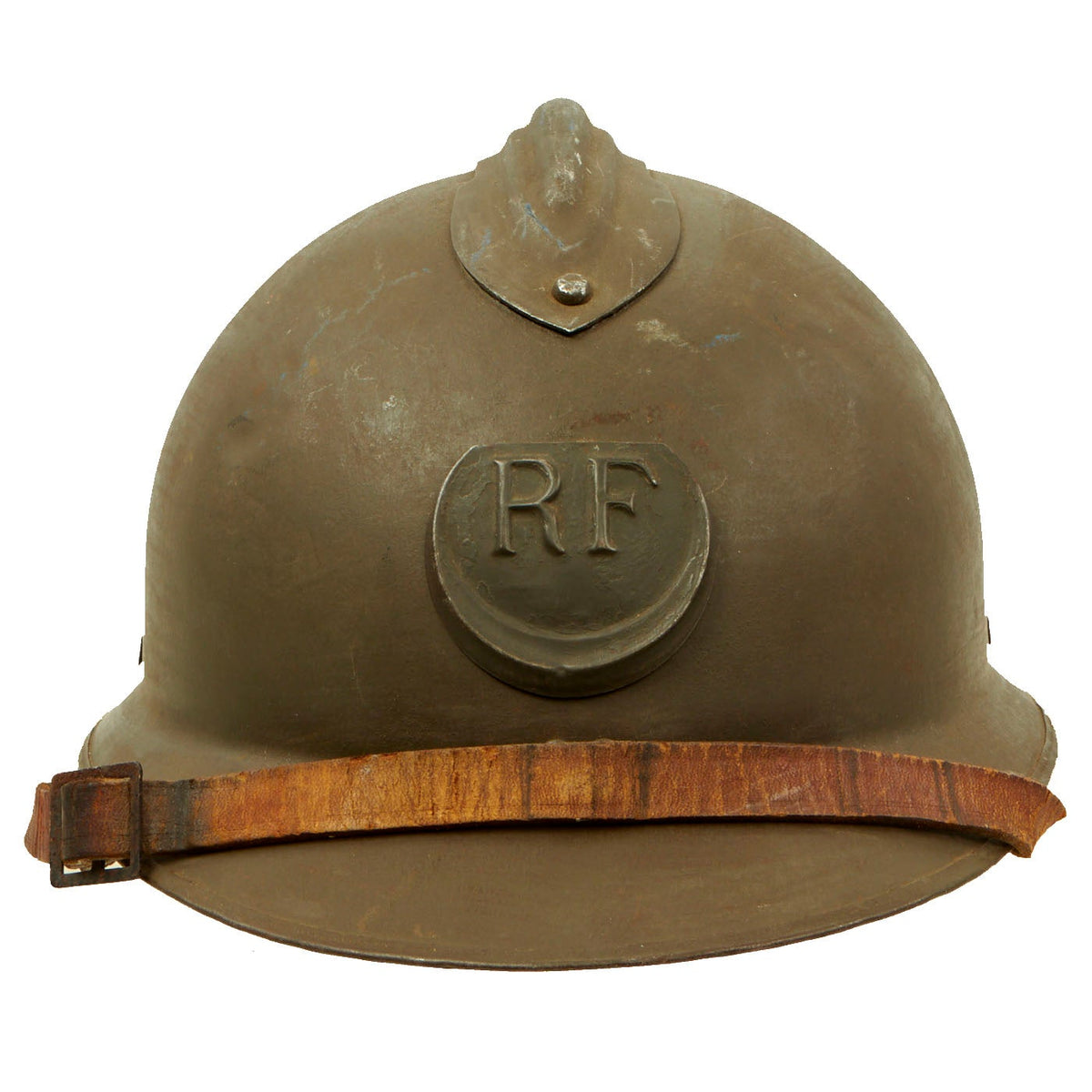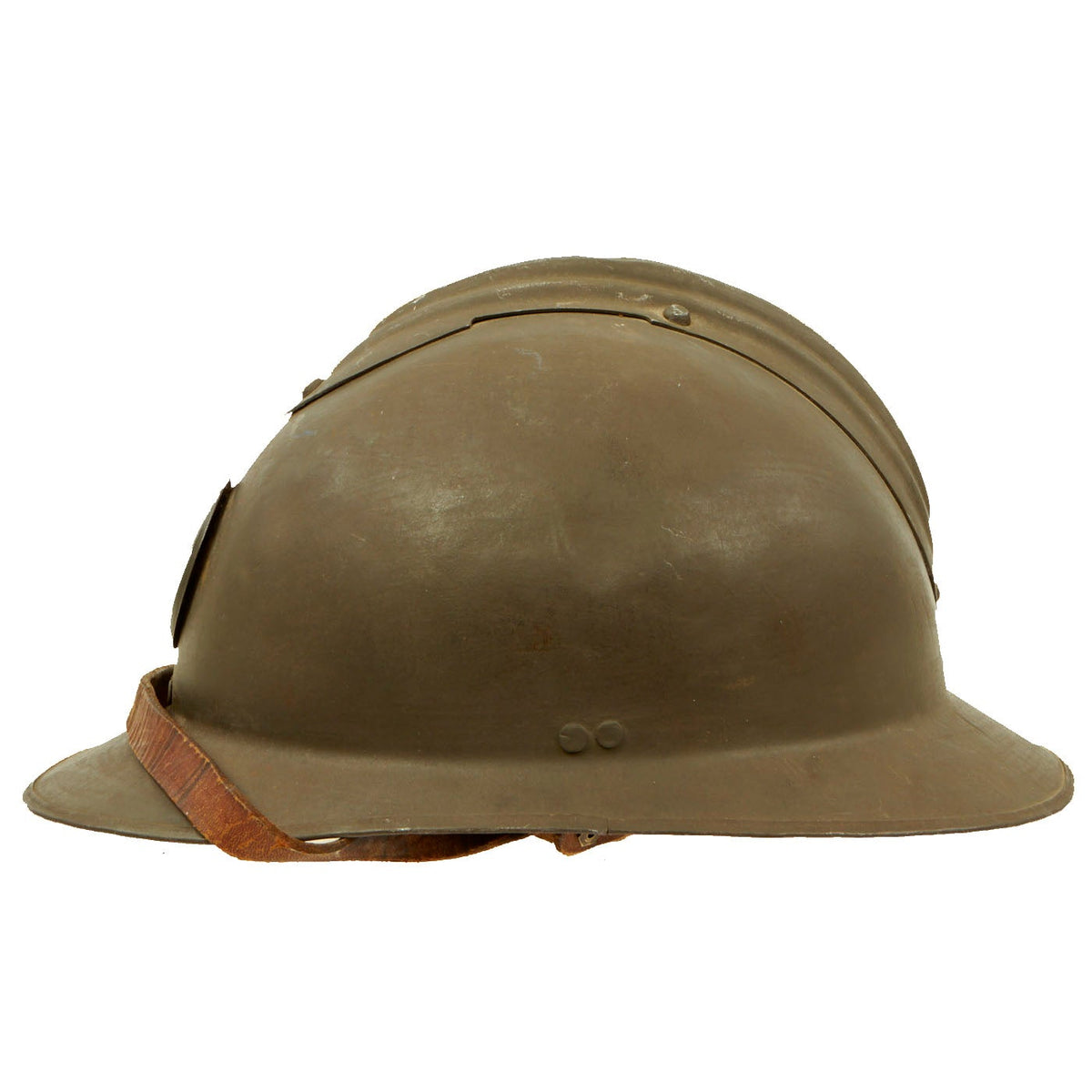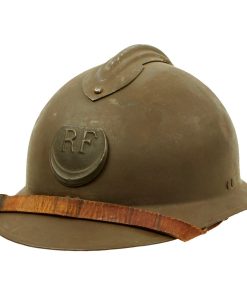Original French WWII North African Zouave M26 Adrian Helmet Original Items
$ 395,00 $ 118,50
Original Item: Only One Available. Excellent genuine World War II model 1926 French North African campaign Zouave helmet. The helmet retains the original olive green paint and is complete with the French North African Zouave RF (République Française) badge to front. Size is approximately US 7.25 (58cm). Features a wonderful complete original leather liner in a heavily worn condition. The liner finish is cracking around the rim of the liner band and one of the fingers is torn. The chinstrap is present and in one piece, however the leather is dry and worn due to age and wear. Overall condition of the helmet is very good, shell shows some minor dings, scratches and paint loss consistent with age. These helmets are rare and very hard to find in such good condition.
In 1926 the Adrian helmet was modified by being constructed of stronger steel and simplified by having the main part of the helmet stamped from one piece of metal, and therefore without the joining rim around the helmet that characterizes the M15. The large ventilation hole under the comb, which had been a weak point of the old design, was also replaced with a series of small holes. The M26 helmet continued in use with the French Army until after World War II, and was also used by the French police up to the 1970s.
The Zouaves were a class of light infantry regiments of the French Army serving between 1830 and 1962 and linked to French North Africa; as well as some units of other countries modelled upon them. The zouaves, along with the indigenous Tirailleurs Algeriens, were among the most decorated units of the French Army.
It was initially intended that the zouaves would be a regiment of Berber volunteers from the Zwawa group of tribes in Algeria—thus the French term zouave—who had gained a martial reputation fighting for local rulers under the Ottoman Empire. The regiment was to consist of sixteen hundred Zwawa Berbers, French non-commissioned officers and French officers. Five hundred Zwawa were recruited in August and September 1830. Twelve years later, zouaves began to be recruited almost exclusively from Europeans, a policy which continued until the final dissolution of these regiments after the Algerian War.
In the 1860s, new units in several other countries called themselves zouaves. The Papal Zouaves were organized by Louis Juchault de Lamoricière, a former commander of North African zouaves, while a former zouave sergeant, François Rochebrune, organized the Polish Zouaves of Death who fought against Russia in the January Uprising of 1863–64. In the 1870s, former Papal Zouaves formed the cadre for a short-lived Spanish zouave unit. The “zouave” title was also used by Brazilian units of black volunteers in the Paraguayan War, possibly due to a perceived link with Africa.
In the United States, zouaves were brought to public attention by Elmer E. Ellsworth, who created and ran a drill company called the “Zouave Cadets”. The drill company toured nationally. Zouave units were then raised on both sides of the American Civil War of 1861–65; including a regiment under Ellsworth’s command, the 11th New York Infantry—the New York “Fire Zouaves”.
The distinctive uniforms of French and other zouave units was of North African origin. It generally included short open-fronted jackets, baggy trousers (serouel), sashes, and a fez-like chéchia head-dress.
Fast Shipping with Professional Packaging
Thanks to our longstanding association with UPS FedEx DHL, and other major international carriers, we are able to provide a range of shipping options. Our warehouse staff is expertly trained and will wrap your products according to our exact and precise specifications. Prior to shipping, your goods will be thoroughly examined and securely secured. We ship to thousands clients each day across multiple countries. This shows how we're dedicated to be the largest retailer on the internet. Warehouses and distribution centres can be located throughout Europe as well as the USA.
Note: Orders with more than one item will be assigned a processing date depending on the item.
Before shipping before shipping, we'll conduct a thorough inspection of the items you have ordered. Today, the majority of orders will be delivered within 48 hours. The delivery time will be between 3-7 days.
Returns
The stock is dynamic and we cannot completely manage it because multiple stakeholders are involved, including our factory and warehouse. So the actual stock may alter at any time. It's possible that you may not receive your order once the order has been made.
Our policy is valid for a period of 30 days. If you don't receive the product within 30 days, we are not able to issue a refund or an exchange.
You can only return an item if it is unused and in the same state as the day you received it. You must have the item in its original packaging.
Related products
Uncategorized
Uncategorized
Uncategorized
Uncategorized
Uncategorized
Uncategorized
Australian WWII Owen MK1 Machine Carbine SMG Custom Fabricated Replica with Sling Original Items
Uncategorized
Angolan Rebel 1970s era 60mm Inert Display Mortar from Angolan Civil War Original Items
Uncategorized
Uncategorized
Uncategorized
Uncategorized
Band of Brothers ORIGINAL GERMAN WWII Le. F.H. 18 10.5cm ARTILLERY PIECE Original Items
Uncategorized
Uncategorized
Uncategorized
Uncategorized
Uncategorized
Uncategorized
Uncategorized
Uncategorized













































































